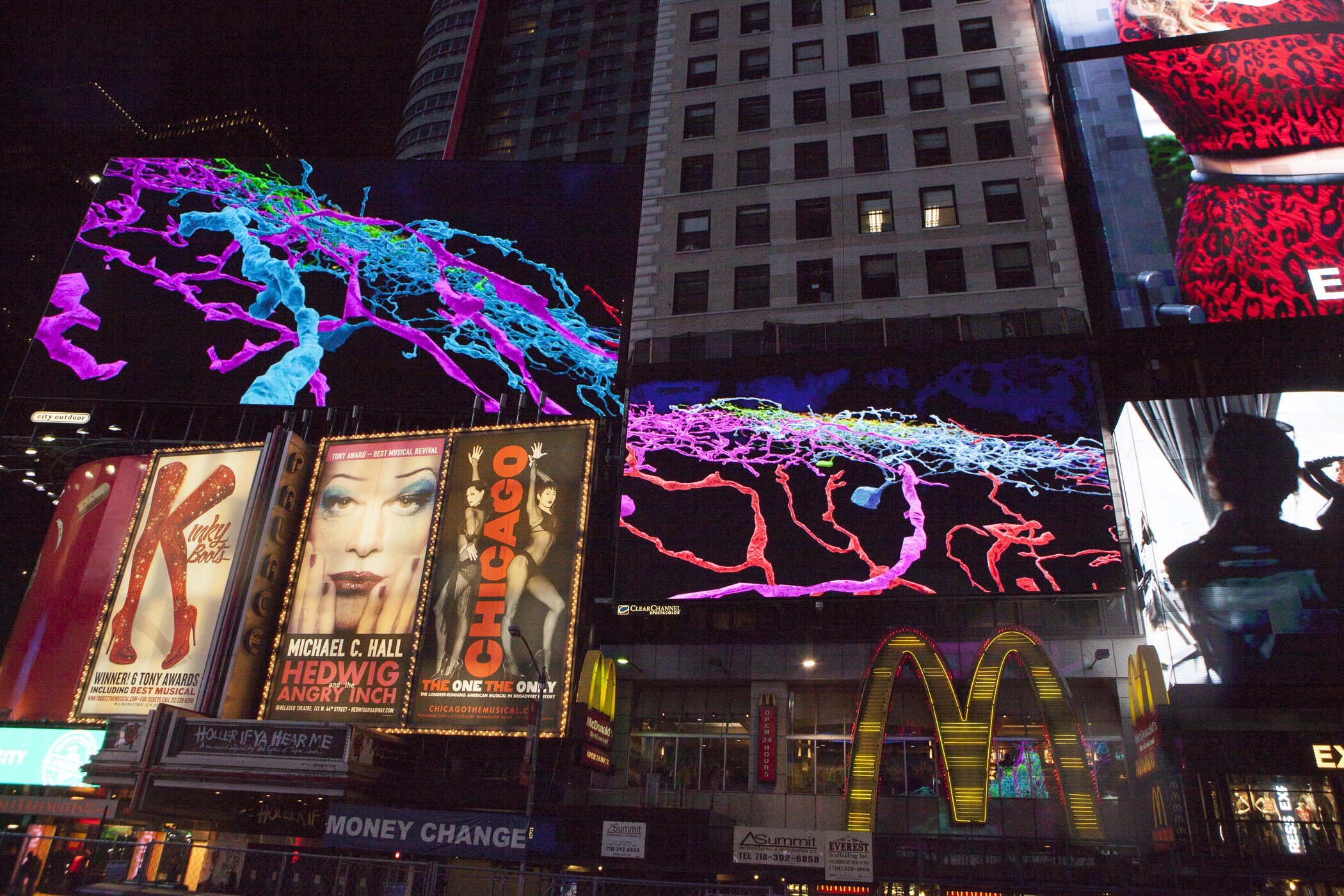Neuroscience Designer. It’s a thing!
Amy R. Sterling is the Executive Director of Eyewire, a game to map the brain from Princeton University. She is an international speaker, science communicator, and contributor for Forbes covering neuroscience and data visualization.
Sterling spends most of her time crowdsourcing neuroscience; catalyzing a future where we bring the world together to further mankind's quest to better understand ourselves. Sterling is passionate about connecting people to projects they care about and has spent over a decade orchestrating and curating crowdsourcing projects. She has advised the White House's Office of Science and Technology Policy in innovation methods and has facilitated numerous brain-related interactive technology experiences over the years, ranging from VR shown at TED and the Tribeca Film Festival to 3D renders and animations shown in major media worldwide including Times Square NYC. Under her leadership, Eyewire has appeared in museum exhibitions in New York, San Francisco, Istanbul, London, Barcelona, Hong Kong, and more.
Sterling is an advocate of side projects and strives to live a modern day Renaissance lifestyle of interdisciplinary explorations and interactions. She aims to surround herself with curious, passionate people. She founded the TEDx Music Project, a collection of the best live music performances from TEDx events around the world.
Sterling was named to the Forbes 30 Under 30 in 2015 and has been dubbed an Innovation Agent by Fast Company.
Play a game, map the mind.
Eyewire Executive Director Amy Robinson Sterling will lead us through unprecedented scientific landscapes on humankind's neuroscientific journey of self-discovery, exploring the exciting prospects in blending machine intelligence and crowdsourced human intellect for the benefit of all at TEDxKyoto.
Sterling has published peer reviewed papers in Nature, Cell, and other journals.

What People Are Saying
“Among the nerds who matter.”
— NBC News
“The essence of Sterling… [is] there is no limb she won’t go out on—no dendrite she won’t explore—if she thinks it will lead to a breakthrough or greater understanding of the world around her. And she believes fiercely in relaying what she learns and in bringing people together to do so.”
— The Boston Globe
“Amy Robinson [Sterling], executive director at Eyeire, is making neuroscience into a playground for the hot tech du jour.”
— Fast Company
“Pretty impressive.”
— Former ISS Commander Chris Hadfield

Select Exhibitions
AI: More than Human
London, UK
How will AI impact generations to come? London’s Barbican Centre tackles the future of AI in a landmark exhibition currently traveling the world. Sterling is one of four visionaries featured on video in the exhibition. In-person visitors are invited to map neurons in a kiosk version of Eyewire.
Brain City
Times Square, NYC
In collaboration with filmmaker Noah Hutton, renders of Eyewire neurons graced dozens of sky high billboards in the Times Square midnight moment.
Brain: wider than the sky
Lisbon, Portugal
Collaboration with the design and development team at the Gulbenkian Museum to create an interactive touch screen explorer of dozens of neurons reconstructed by Eyewirers and AI.
BrainVR
Tribeca Film Festival, NYC
Following up on our 2014 TED virtual reality experience, we created a working neural circuit in VR in partnership with MIT Media Lab for Tribeca Film Festival. Visitors triggered a light sensitive circuit that was discovered by Eyewirers and published in the journal Nature.
Boston
Wine and neuron painting at night. A special series at MIT Musuem.
Istanbul
The 3rd Annual Istanbul Design Biennialle asks: Are We Human?
San Francisco
Invited participant in popup brain exhibition featuring Eyewire.
Vancouver
Co-created the world’s first neurons in VR Experience in 2014, featuring a field of retinal ganglion cells in Oculus Rift, as well as superman style navigation with a KINECT on a gigantic 18 million pixel screen.
Say hello!
I’m always down for a new connection.






